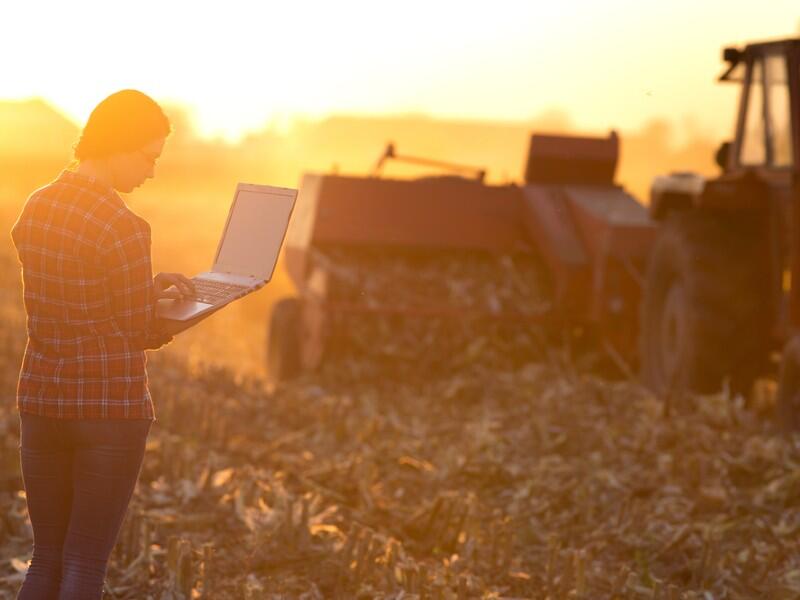These leading technologies will play pivotal roles in transforming farming practices to help feed a growing world population.

Image: Budimir Jevtic/Shutterstock
Feeding the world when there are limits to land, resources and skilled labor, exerts pressures on farmers to increase crop yields. In the past, farmers did this by rotating crops, fertilizing fields, using pesticides and installing irrigation—but with weather conditions changing almost unpredictably, farmers need to take as much guesswork out of planning and harvesting crops as possible.
SEE: Future of farming: AI, IoT, drones, and more (free PDF) (TechRepublic)
"Farmers face a major challenge in having to feed a world population that will increase to 2 billion people over the next 30 years according to the United Nations and the USDA," said Zach Bonefas, senior staff engineer and automation technology leader, at John Deere. "They also must work through many variables inherent to farming, like changing weather conditions, variations in soil quality and the presence of pests, which can have a big impact on their ability to produce food. Creating predictability out of that variability is the key, and that's where technology comes in."
The obvious technology fit is artificial intelligence. AI can crunch through structured data about crops and fields; it can also process unstructured data from sensors, photos and video.
"Advanced agricultural machines today use sensors and connectivity to collect data on everything from planting conditions to crop success," Bonefas said. "These insights are gathered year-over-year, and the historical data works in tandem with data gathered in real time to help a farmer make choices about how to care for their plants."
SEE: Microsoft's Azure IoT platform helps make farming greener as well as smarter (TechRepublic)
Now with AI, farmers have the ability to manage at the level of the individual plant. This is in stark contrast to former practice when farmers cared for their plants at the field level.
The ability to use AI optimizes opportunities to sustainably produce consistent, high-quality crops, even in the face of tremendous variability because the AI delivers technology that allows farmers to manage each foot-by-foot section of the farm based on its unique conditions and needs.
"It's exactly why AI advancement allows farmers to deploy resources efficiently, plant crops only where they will successfully produce food, and apply nutrients and crop protectants closer to where they're needed," Bonefas said.
SEE: Appalachian agtech: Indoor farm brings 1 million pounds of sustainable produce to market (TechRepublic)
Harvesting is a great example of AI on the farm. A combine is used to separate grain from the rest of the plant without causing damage to corn kernels. "That separation process is not perfect, and it's impossible for a farmer to see every kernel as it makes its way through the different sections of the machine," Bonefas explained. "AI enables the machine to monitor the separation process and to make decisions based on what it's seeing. If the harvest quality degrades, the AI-enabled system automatically optimizes the combine's settings or recommends new settings to the farmer to achieve more favorable results."
In other farming operations, AI uses computer vision and machine learning to detect weeds and precisely spray herbicides only where needed. This results in significant cost reductions for farmers, who in the past used sprays across entire fields, even in areas where sprays were not needed.
SEE: Intel and John Deere pilot AI and computer vision program to detect manufacturing defects (TechRepublic)
The weed detection technology works because it integrates AI with IoT devices such as cameras that can take good pictures regardless of weather conditions. Computers process imagery from the cameras and use sophisticated machine learning algorithms that detect the presence of weeds and actuate the required nozzles on sprayers at the exact moment needed to spray the weeds.
"In the future, technologists will be working on how to maximize food production by being able to quickly sense and target the needs of individual plants so that plants get the exact amounts of water, fertilizer and pest protection that they need," Bonefas said.
Central to this is making more bandwidth and connectivity available to farmers who are in rural areas. Once rural broadband access expands, more technology can be supported on the farm and AI can play an expanded and pivotal role.

Data, Analytics and AI Newsletter
Learn the latest news and best practices about data science, big data analytics, and artificial intelligence. Delivered Mondays
Sign up todayAlso see
- 9 questions to ask when auditing your AI systems (TechRepublic)
- Graphs, quantum computing and their future roles in analytics (TechRepublic)
- Hiring Kit: Video Game Producer (TechRepublic Premium)
- Transportation trends: Self-driving vehicles, hyperloop, cars communicating with crosswalks, AI, and more (free PDF) (TechRepublic)
- TechRepublic Premium editorial calendar: IT policies, checklists, toolkits, and research for download (TechRepublic Premium)
- What is AI? Everything you need to know about Artificial Intelligence (ZDNet)
- Artificial Intelligence: More must-read coverage (TechRepublic on Flipboard)





 English (US) ·
English (US) ·